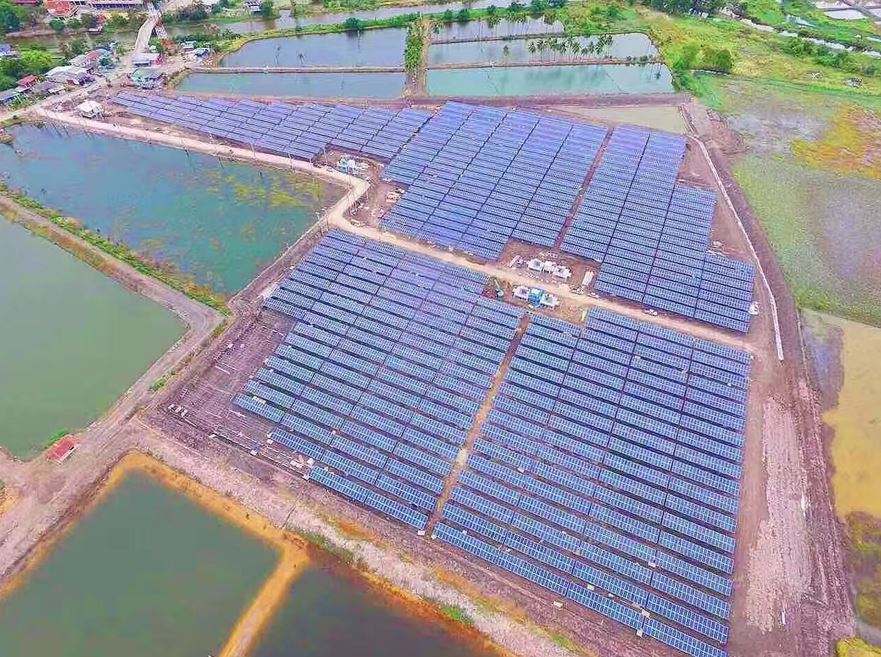Asia now accounts for more than 65% of the global solar market, with 34.5 GW installed in China last year, followed by 8.6 GW in Japan and 4.1 GW in India, APVIA said, citing data provided by the PV Market Alliance, the Becquerel Institute and the Asia Europe Clean Energy (Solar) Advisory. Throughout last year, China, India and the U.S. drove global expansion, offsetting a slowdown in the European and Japanese markets. It said that excluding China, the global PV market expanded by roughly 17% from the preceding year to 41 GW in 2016.
While APVIA described Asia as the “global PV centre of gravity” in terms of manufacturing and installed capacity — accounting for 60-70% of global solar demand in 2016 — the fourth quarter was a period of slow growth in the region. However, the Asian PV sector rebounded in the first three months of this year, primarily driven by China, India and Japan, APVIA said, noting that regional demand was “significantly influenced” in 2016 by the “evolution” of the Chinese market.
“Most companies report a higher level of installations in China due to the expected feed-in tariff (FIT) decline in June, which drives installations up,” APVIA said in the first edition of its quarterly solar market report. “The PV market continues to be shaped on a quarterly basis by these policy decisions, due to the high impact of FIT changes in China and Japan.”
In the Asia-Pacific, APVIA said that Australia, South Korea, Thailand and the Philippines also contributed to strong regional growth last year. It pointed to Taiwan, Malaysia, Vietnam and Indonesia as the most promising future PV markets in Asia. APVIA described China and Japan as the Tier 1 markets of the Asia-Pacific region, adding that India may reach similar status in the near future. The region’s Tier 2 markets include Australia, South Korea, Pakistan, and the Philippines, with each country exhibiting “stable demand” throughout 2016. APVIA did not include the Middle East in its Asia forecast.
In China, the FIT scheme is still the main driver for installations, but the program will likely be replaced by green certificates in 2018. APVIA expects this to weigh on demand in the country and in turn to negatively impact the global PV market. In addition, the first-quarter installation rush in China has cast a shadow of uncertainty on regional demand beyond the second quarter of this year, the Singapore-based organization said.
“Growing markets in Asia, and especially India could have a major role to play in balancing the future global PV market… allowing a reasonable split of the market burden between China, India, Japan and the rest of the world,” it explained.
Cumulative installations in India reached about 12 GW in the first quarter of 2017, APVIA said. It believes that as much as 9 GW could be installed in the country this year. Key policy developments expected in the months to come include the launch of a scheme this summer to support the deployment of storage solutions, which APVIA said could create additional demand for solar.
The organization expects 6 to 8 GW of installations in Japan this year, down from 8.6 GW in 2016 and 11 GW in 2015. Annual PV installations in South Korea — where a renewable portfolio standard (RPS) is the key driver for demand — hit 900 MW in 2016, down 20% year on year.
APVIA said that in Malaysia, yearly solar installations are still falling short of the country’s potential, despite the existence of a strong legislative framework to support deployment. Vietnam has only installed about 50 MW of solar capacity thus far, but “future growth is expected to significantly increase,” APVIA said, noting that the government recently introduced a FIT scheme.
Beyond East Asia, APVIA is particularly bullish on the outlook for Pakistan. Roughly 700 MW of solar was installed in the country in 2016, with expectations for up to 1 GW this year. “Favourable framework conditions, significant power shortages and high levels of solar irradiation will ensure strong growth,” APVIA said.
In a separate statement, APVIA said that a number of Asian countries are also trying to build up production capacity to manufacture energy storage solutions, while developing policies to support domestic deployment. “Recent developments suggest that in the future Asia could be home to the largest (energy storage) manufacturing capacities,” the organization said, adding that the countries throughout the region could collectively become the world’s biggest storage market in the future.
This content is protected by copyright and may not be reused. If you want to cooperate with us and would like to reuse some of our content, please contact: editors@pv-magazine.com.



By submitting this form you agree to pv magazine using your data for the purposes of publishing your comment.
Your personal data will only be disclosed or otherwise transmitted to third parties for the purposes of spam filtering or if this is necessary for technical maintenance of the website. Any other transfer to third parties will not take place unless this is justified on the basis of applicable data protection regulations or if pv magazine is legally obliged to do so.
You may revoke this consent at any time with effect for the future, in which case your personal data will be deleted immediately. Otherwise, your data will be deleted if pv magazine has processed your request or the purpose of data storage is fulfilled.
Further information on data privacy can be found in our Data Protection Policy.